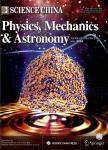Charge density wave and weak Kondo effect in a Dirac semimetal CeSbTe
Charge density wave and weak Kondo effect in a Dirac semimetal CeSbTe作者机构:Zhejiang Province Key Laboratory of Quantum Technology and DeviceDepartment of PhysicsZhejiang UniversityHangzhou 310027China Center for Correlated MatterZhejiang UniversityHangzhou 310058China National Laboratory of Solid State MicrostructuresCollege of Engineering and Applied SciencesNanjing UniversityNanjing 210093China State Key Laboratory of Functional Materials for Informatics and Center for Excellence in Superconducting ElectronicsShanghai Institute of Microsystem and Information TechnologyChinese Academy of SciencesShanghai 200050China Collaborative Innovation Center of Advanced MicrostructuresNanjing UniversityNanjing 210093China Elettra Sincrotrone TriesteStrada Statale 14 km 163.5Trieste 34149Italy Department of PhysicsHangzhou Normal UniversityHangzhou 310036China
出 版 物:《Science China(Physics,Mechanics & Astronomy)》 (中国科学:物理学、力学、天文学(英文版))
年 卷 期:2021年第64卷第3期
页 面:90-98页
核心收录:
学科分类:07[理学] 070205[理学-凝聚态物理] 0702[理学-物理学]
基 金:supported by the National Key R&D Program of the Ministry of Science and Technology of China (Grant Nos. 2016YFA0300203, and 2017YFA0303100) the National Science Foundation of China (Grant Nos. 11674280, and 11774305) the Science Challenge Program of China Part of this research used Beam line 03U of the Shanghai Synchrotron Radiation Facility, which was supported by ME2 Project (Grant No. 11227902) from the National Natural Science Foundation of China
主 题:charge density wave Kondo effect Dirac semimetal
摘 要:Using angle-resolved photoemission spectroscopy(ARPES) and low-energy electron diffraction(LEED), together with densityfunctional theory(DFT) calculation, we report the formation of charge density wave(CDW) and its interplay with the Kondo effect and topological states in CeSbTe. The observed Fermi surface(FS) exhibits parallel segments that can be well connected by the observed CDWordering vector, indicating that the CDWorder is driven by the electron-phonon coupling(EPC) as a result of the nested FS. The CDW gap is large(~0.3 eV) and momentum-dependent, which naturally explains the robust CDWorder up to high temperatures. The gap opening leads to a reduced density of states(DOS) near the Fermi level(EF), which correspondingly suppresses the many-body Kondo effect, leading to very localized 4 f electrons at 20 K and above. The topological Dirac cone at the X point is found to remain gapless inside the CDW phase. Our results provide evidence for the competition between CDWand the Kondo effect in a Kondo lattice system. The robust CDWorder in CeSbTe and related compounds provide an opportunity to search for the long-sought-after axionic insulator.



